
 |
Eager Space | Videos by Alpha | Videos by Date | All Video Text | Support | Community | About |
|---|

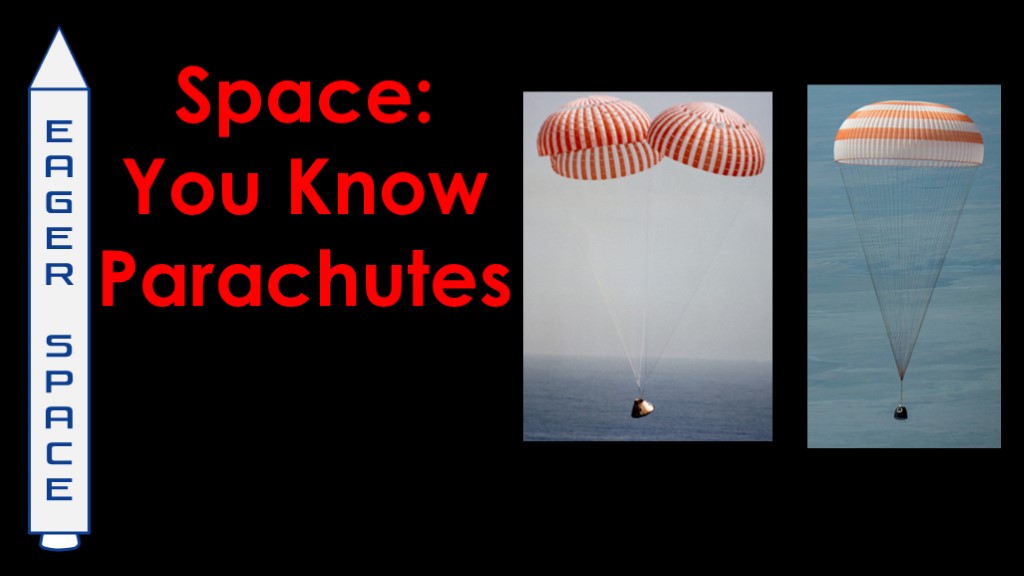
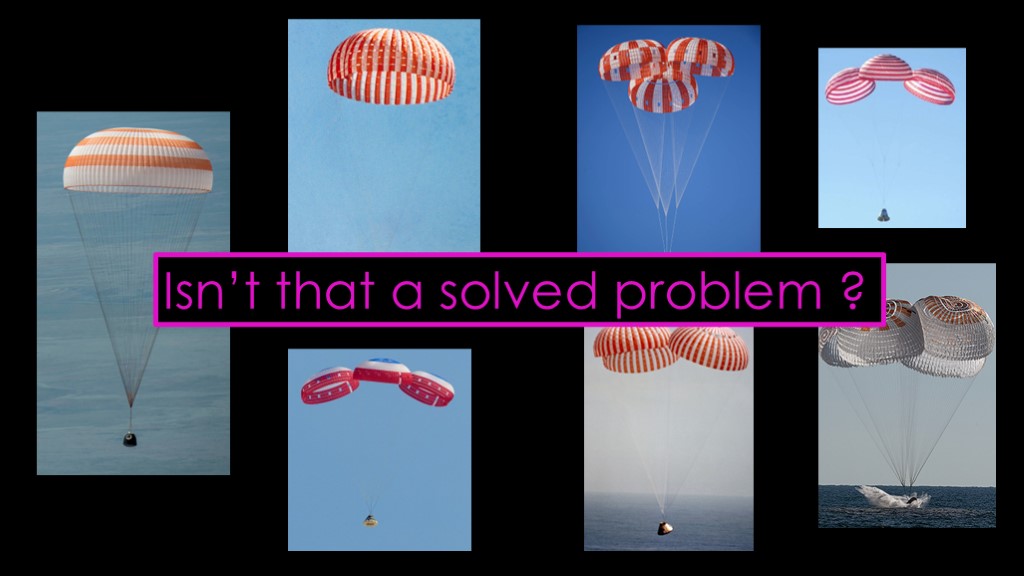
I was talking about space capsules with a friend of mine recently, and we got onto the topic of parachutes.
He asked me an interesting question.
Isn't that a solved problem?
Parachutes have been used in human spaceflight for more than 50 years. Haven't we figured out how to make them work?
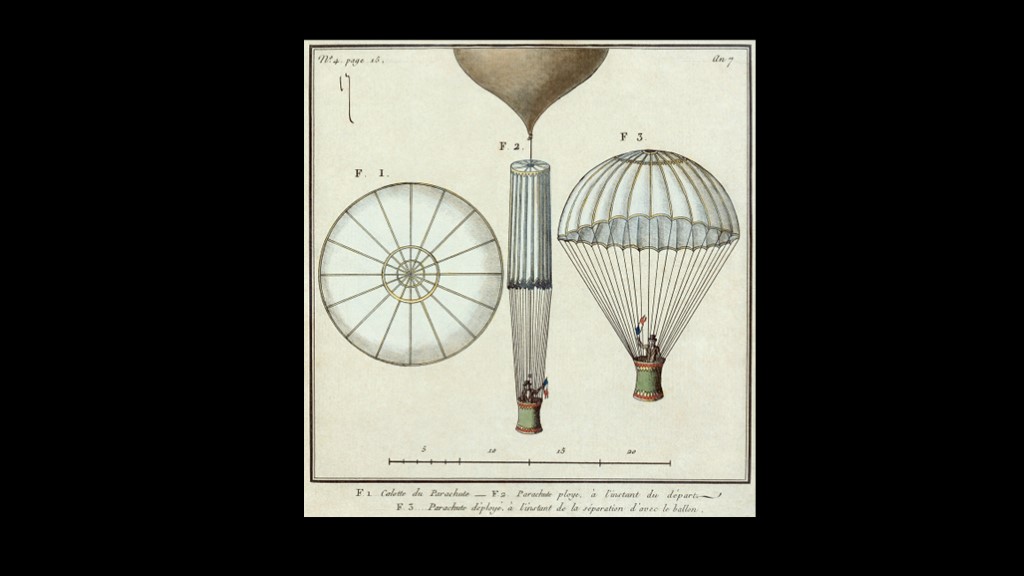
It's a fair question. After all, Jacques Garnerin built and tested this design back in 1797, so one would think that it would be figured out by now.
But it turns out that parachutes are still cranky beasts that are not well understood. Especially when used in spacecraft.
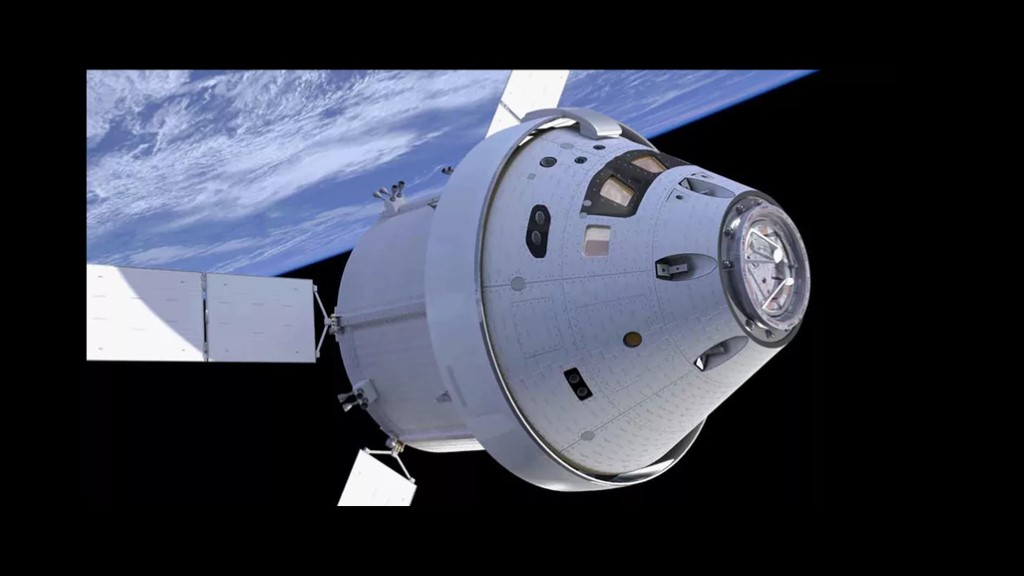
We'll start by looking at the parachute system used by the Orion capsule, first designed during the Constellation program in 2005 and recently flown on the Artemis 1 mission.

The parachute's role starts at about 26000 feet of altitude with the capsule travelling at 325 miles per hour. That's 8 kilometers and 523 kilometers per hour.
The first problem is that none of the parachute hardware is exposed - it's protected during flight by the forward bay cover. We need to get rid of the cover. Unfortunately, the airflow behind the capsule can be quite chaotic, as you can see from this simulation. If we just release the cover, it could get stuck or come back and collide with the capsule.
We need something that will actively pull the cover away from the capsule.
We can do it with parachutes, but we'll need to get the parachutes away from the capsule enough so that they will work reliably.

We need something like a party popper, where we use a small pyrotechnic device to generate a lot of gas and use that gas to propel our payload - in this case a parachute - away from the capsule.
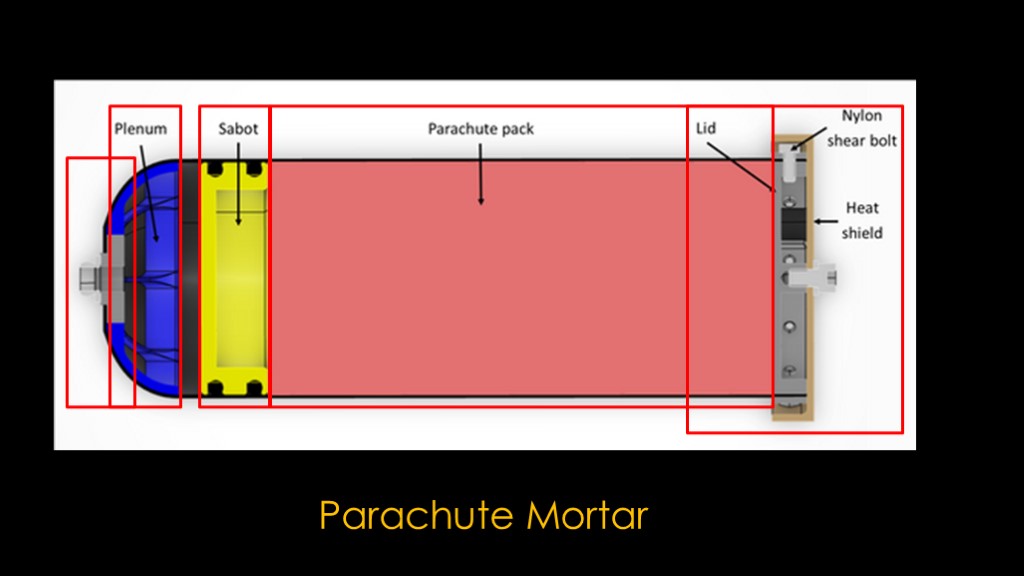
The big version we need is known as a parachute mortar
On the left we have an electrically triggered pyrotechnic device that can produce a lot of hot gas.
That gas travels through a plenum - or open chamber.
It exerts pressure against the sabot. That's a term from military mortars - in this case, I think "piston" is probably a better word.
The pressure pushes against the parachute pack. Because space is very limited in capsules, the parachute is very tightly compressed in the mortar, to roughly the density of wood.
Once the pressure on the parachute pack is high enough, it will blow the lid off the end and the parachute will deploy.
Parachute mortars are sophisticated devices - they need to use the right amount of pressure but not too much and the parachutes have to be carefully packed so they deploy correctly.
All of this needs to be tested. Like this:

Mortars deploy the parachute far away from the capsule. They significantly increase the chance that a parachute will deploy and won't get tangled with other parachutes.
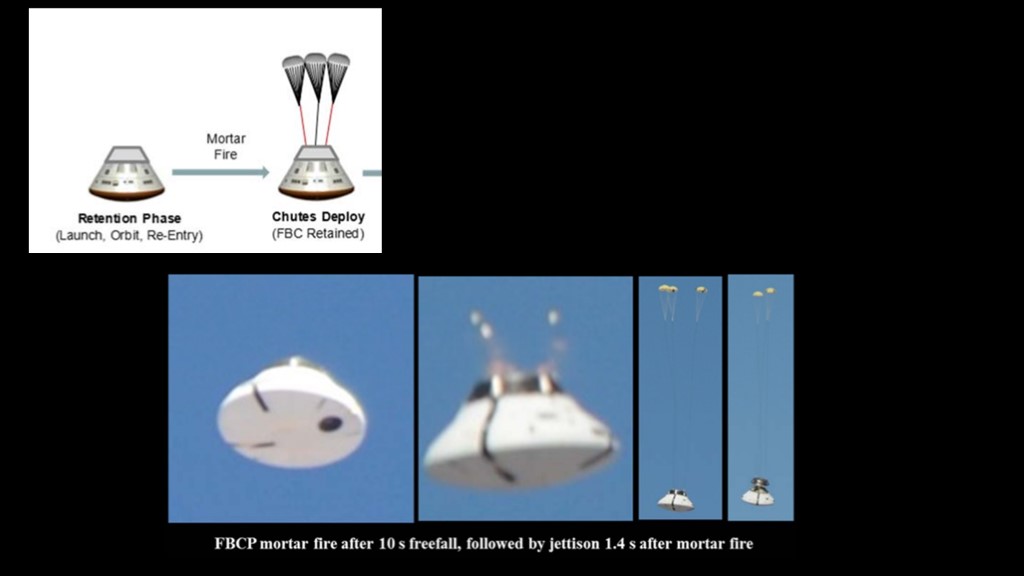
Three mortars deploy small chutes connected to the front bay cover of the capsule and the pull of the chutes plus small thrusters pull the cover away from the capsule.
This design was tested on the ground and ultimately tested in airdrops.

Next, we will deploy two 23' parachutes known as drogues. They stabilize the capsule and begin the process of slowing it down. Like the front bay cover parachutes, they are also deployed by mortars, shown here in green and yellow.
There's a problem, however. If we toss these chutes out of a capsule that is going very fast, they will quickly inflate and tear themselves apart.
Which would be bad.
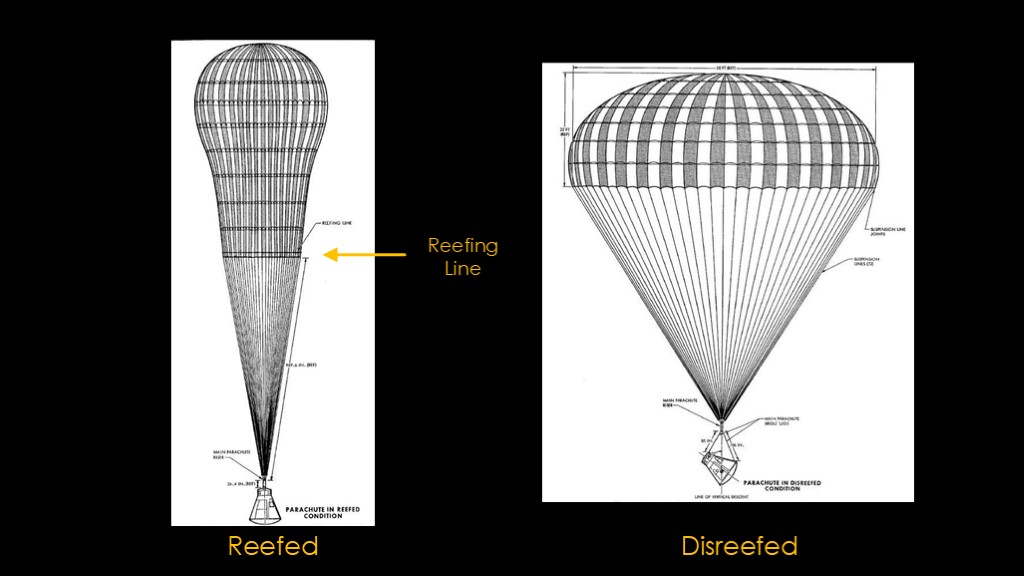
This is solved by using a technique known as reefing. A reefing line is wrapped around the bottom part of the parachute and it keeps the parachute from opening fully and therefore limits the amount of drag produced and the shock on the system.
You can think of reefing as a way to make a parachute temporarily function as a smaller parachute. After a period of time, the reefing line is released and the parachute will open fully.
This is a diagram from the Gemini program showing the reefed and disreefed - or open - appearance of the parachute.

The Orion capsule drogues use two-stage reefing. They start in a fully reefed condition, then progress to a partially open state, and then finally to a fully open state.
Reefing of course adds complexity to parachute design and testing.

Each drogue parachute is attached to the capsule at three points. The lines between each parachute and those points need to be routed in channels designed in the capsule so that they are protected from damage and can deploy successfully.
The left drogue harness is shown in yellow, and the right drogue harness is shown in red.

The drogue chutes have done their job, but we need to be sure they don't get tangled up with the main chutes, so we need to get rid of them. This is done with a line cutter. The line goes through this end of the cutter.
The line will ultimately be cut with the blade, but we really don't want that to happen ahead of time, so the piston is held in place by two shear pins that keep the blade away from the line.
When we want to cut the line, an electrical signal is sent to the pyrotechnic cartridges - two of them in case one fails - and they generate a large amount of gas, exerting enough pressure on the piston to break the shear pins and fire the blade into the anvil, cutting the line.
Once that happens, the capsule is free falling again.
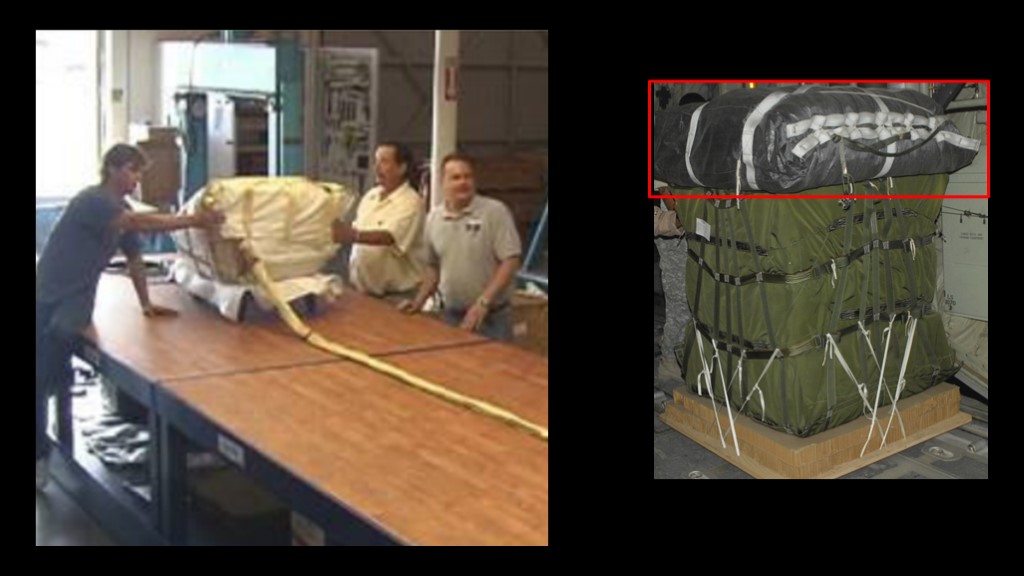
We are finally ready to deploy the main parachutes.
The mains are really big - the opened parachute is 116' in diameter and weighs 310 lbs. The mortars that we used for the much smaller drogues were about as big as we could fit in the capsule, so we need a different approach...
The mains are packed in parachute bags that are specially shaped to fit in the available space. This is not a new concept - military cargo parachutes are packed into deployment bags for the same purpose - but the capsule ones need to be packed much more tightly.
The bags fit into the capsule, but we need a way to deploy them quickly.
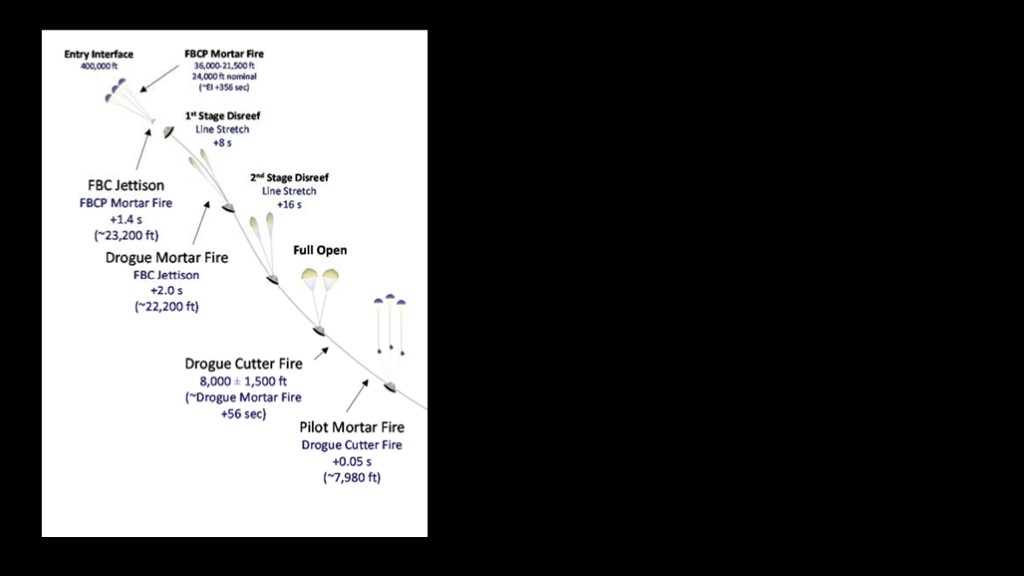
We do this with *another* set of parachutes known as pilot chutes. At 11' across and 11 lbs, they are tiny, but when they are deployed, they pull the main chute bags away from the vehicle and the chutes stream out of the bags.
The main chutes also go through two stages of reefing before they open fully. After landing, a line cutter detaches the parachutes from the capsule so it will stay upright even in high winds or seas.
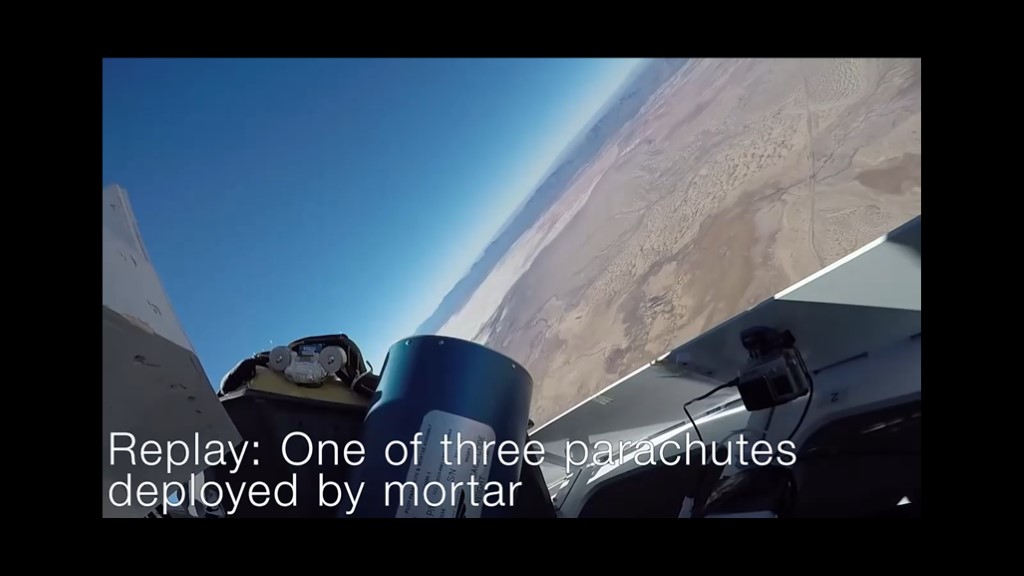
Here's a nice video showing main parachute deployment using a pilot parachute, this time from a Starliner test.

This is a diagram of the parachute components used in Orion, looking down from the top of the capsule. At the bottom you can see the two drogue mortars with the chutes inside of them. You can see the three pilot chute mortars next to the main chutes they attach to, and finally the large main chutes packed in their bags.
The width of the parachute section is about 3 meters at the bottom and gets smaller toward the top of the capsule.
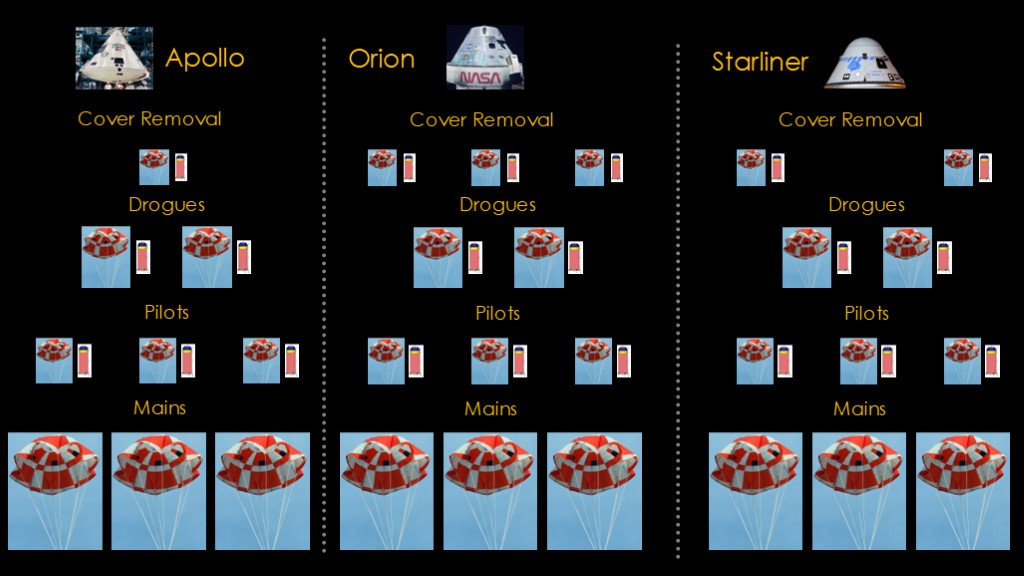
Let's count up what it takes to get Orion safely back to the earth's surface.
That's three chutes and mortars to remove the cover, two drogues and mortars, and three pilots and mortars to deploy the three main chutes. 8 mortars and 11 chutes in total.
How does that compare to other capsules?
Apollo used the same scheme, except that it only used one chute and mortar to remove the cover. 6 mortars and 9 chutes.
Boeing's starliner also uses this approach, and uses two chutes and mortars to remove the cover. 7 mortars and 10 chutes total.
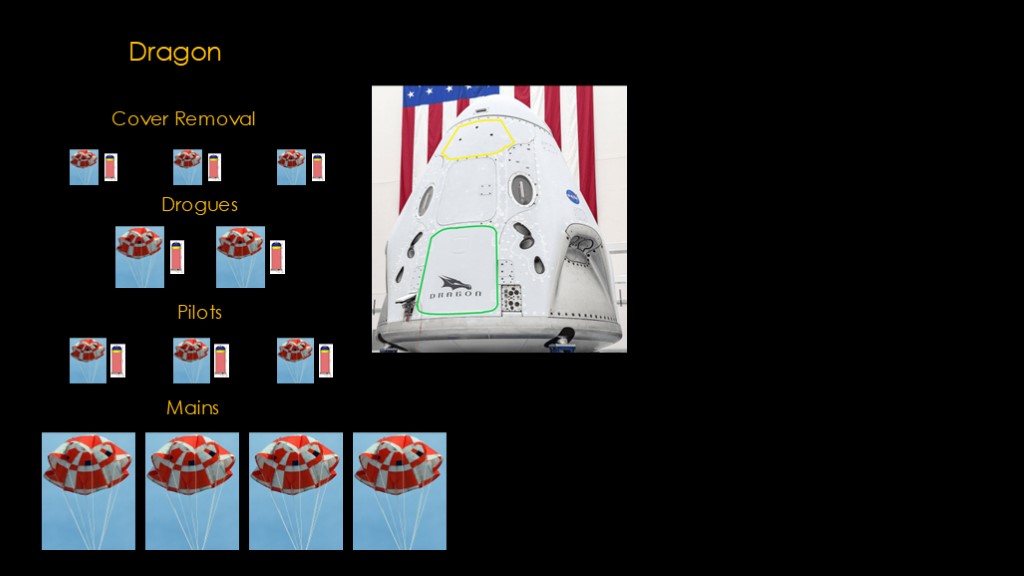
SpaceX has - predictably - done something different with crew dragon.
Crew Dragon stores its parachutes in compartments shown in green and yellow rather than under a removable cover, so there is no need for cover removal chutes.
They do have two drogue parachutes deployed with mortars. Rather than cutting the drogues free and then using pilot parachutes to deploy the mains, Crew Dragon uses the drogues to deploy the mains, so it does not need pilot chutes. Initially, crew dragon had 3 main chutes but a fourth was added during testing. That means SpaceX uses 6 parachutes instead of the 9-11 used with the other capsules and only two mortars.
This video shows the crew dragon under the drogue chutes, then extracting the main chutes. We can clearly see the main chutes start fully reefed and then open in two steps.

The Russian Soyuz is also different. It uses two small pilot parachutes to deploy a single braking parachute, which I suspect is similar to a drogue. That drogue then deploys a single large main parachute.
This system looks to be lacking in redundancy, but there is a full backup system that can take over if the main system fails. The backup main parachute is smaller and results in a slightly higher landing velocity than the main system.

These are complex systems, and while it is possible to do some analysis on them, they all rely on testing.
Lots of testing - the Orion parachute test program ran for 10 years.
The tests are used to find issues that need to be addressed, but just as importantly, they give empirical - or real-world - data on the reliability of the parachute systems.
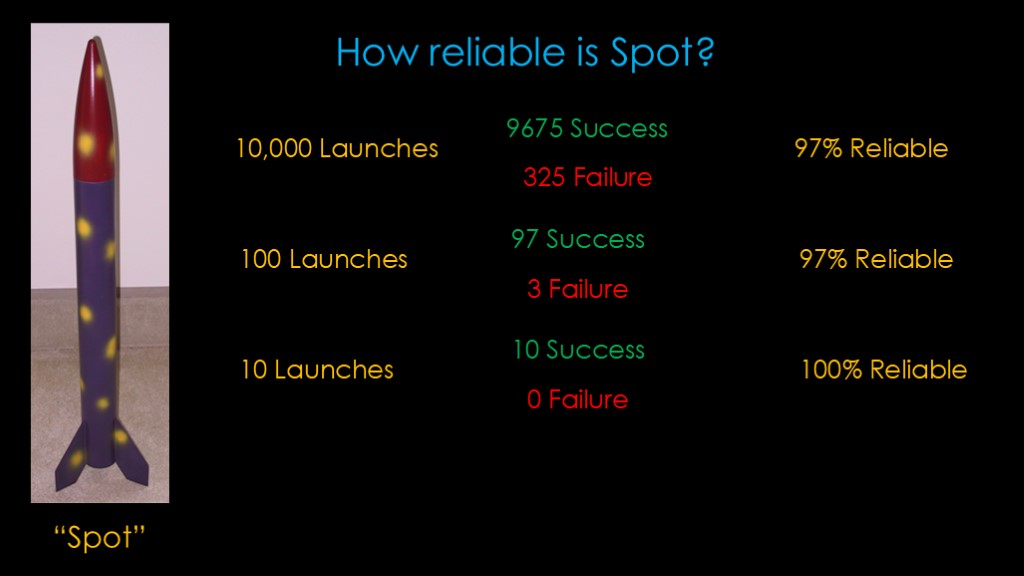
To explore this I'd like to introduce you to my high power rocket, "Spot", which uses a parachute for recovery.
Let's say that I launched it 10,000 times, and the parachute worked 9675 times and failed 325 times. With those numbers, we'd feel pretty confident that it was 97% reliable because we have a lot of empirical data.
Let's reduce the number of launches to 100. We get 97 successes and 3 failures. Looks like 97% reliable, but we are less confident in the results, because we have less data.
Now we drop it down to only 10 launches. We get 10 successes and no failures, which means it is 100% reliable by calculation.
We know that number is wrong because nothing is 100% reliable. But we would like to be able to say something useful about the reliability of our parachute system other than "it hasn't failed yet".
There is an engineering approach that lets us do that, and its basically about quantifying the chance that we are just getting lucky in our testing.
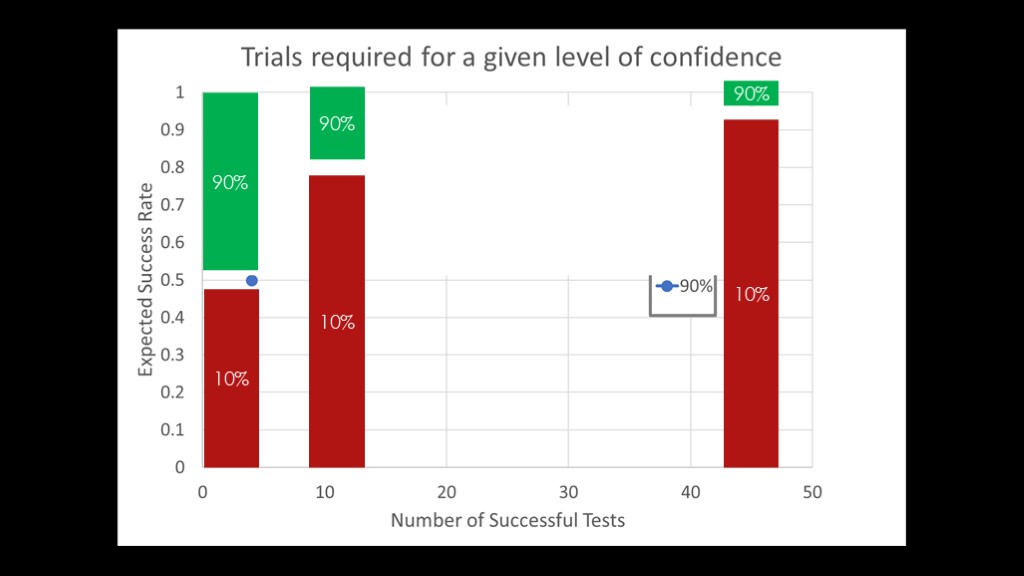
We fly Spot 4 times and the system works every time. We can figure out mathematically that there is a 90% chance that the reliability of the parachute is 50% or greater, and a 10% chance that we got lucky and the reliability is less than 50%.
We aren't super excited by that - 50% reliability doesn't sound very good - but we know more than just saying "it worked 4 times", and - importantly - it helps remind us that we might have just gotten lucky.
As we do more testing, our estimate of reliability goes up. With 11 successes, we are 90% confident that our reliability is at least 80%, and if we go all the way to 45 successes, we are 90% confident that our reliability is at least 95%.
But there's still a 10% chance we could be wrong, and the actual reliability could be lower.
What if we want to be more confident?
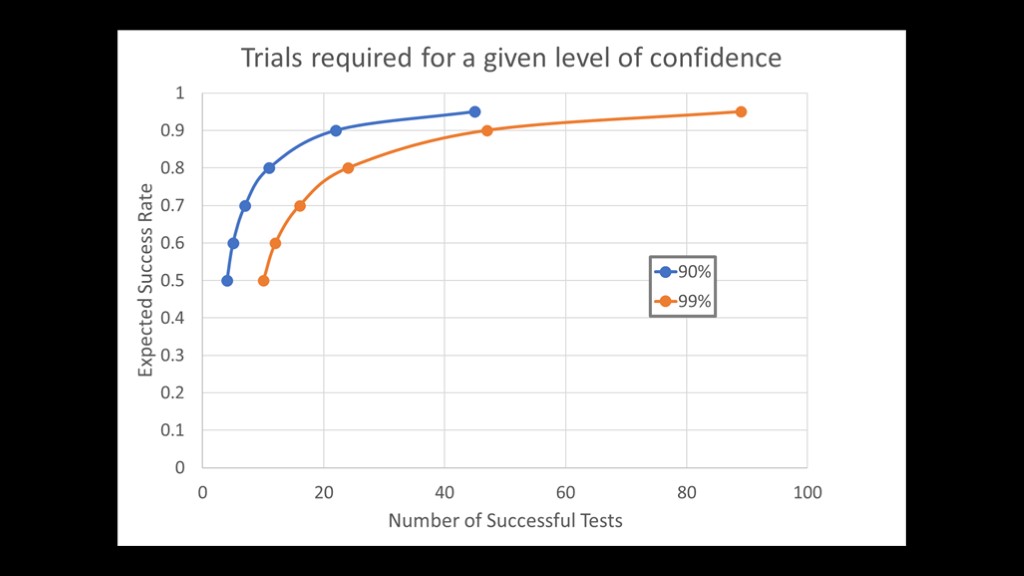
We can calculate another curve, a curve that shows what we can determine if we want to be 99% sure of our estimate.
On this curve, we need 24 successes to be 99% sure we have 80 percent reliability, 47 for 90 percent reliability, and 89 tests for 95 percent reliability.
In this sort of situation, you need to test a lot to get even modest amounts of information on reliability. And the whole thing seems to be counter-intuitive - a system that works 89 times in a row seems extremely reliable, but we actually can't conclude that - we could still be getting lucky.
Is there a better approach than just running a bunch of tests?
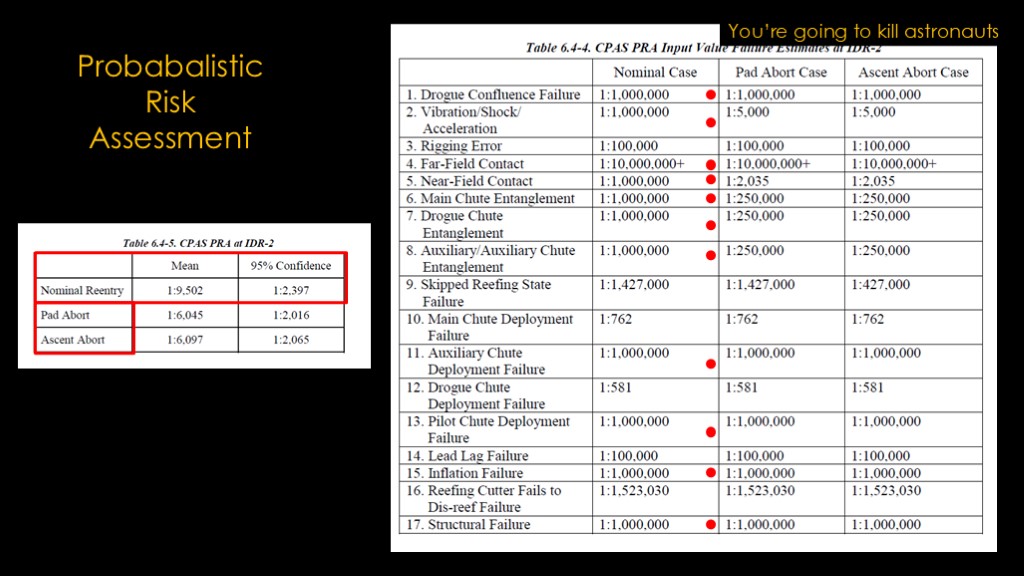
And that takes us to a technique known as probabilistic risk assessment. If you want the details, see my video on reliability and crew safety at NASA titled "you're going to kill astronauts".
The basic idea is that you do a detailed analysis of all the components of your system, figure out how reliable every part of it is, figure out how individual failures could cause a major failure, do a bunch of math, and out pops some numbers. It takes a lot of time and money to do it well.
In NASA's analysis of the Orion parachute system, they found that the most likely value is that the system will fail in 1 out of 9,502 flights. They also note that they are 95% confident that it is at least as good as one failure in 2397 flights.
NASA has shared some of the detailed information that went into their final calculations.
I've added some red dots. Every red dot indicates a probability of either 1 in a million or one in 10 million. Those are suspiciously round numbers, and they are round numbers because NASA simply doesn't have a better estimate for the probability, so they have come up with an educated guess. Many of those guesses are probably pretty good, some of them are likely to be significantly wrong. Once again, we've run up against the issue of limited knowledge - we simply don't have enough information to do an analysis that would substitute for testing, so we need to rely on testing.
There's another topic that popped up here. There are abort scenarios where the parachute system needs to work, and the requirements there are different than a nominal reentry.

For Orion, a low altitude or pad abort totally skips the drogue deployment part of the sequence.
Crew Dragon still uses the same sequence, which gives me a great opportunity to show the crew dragon pad abort test.
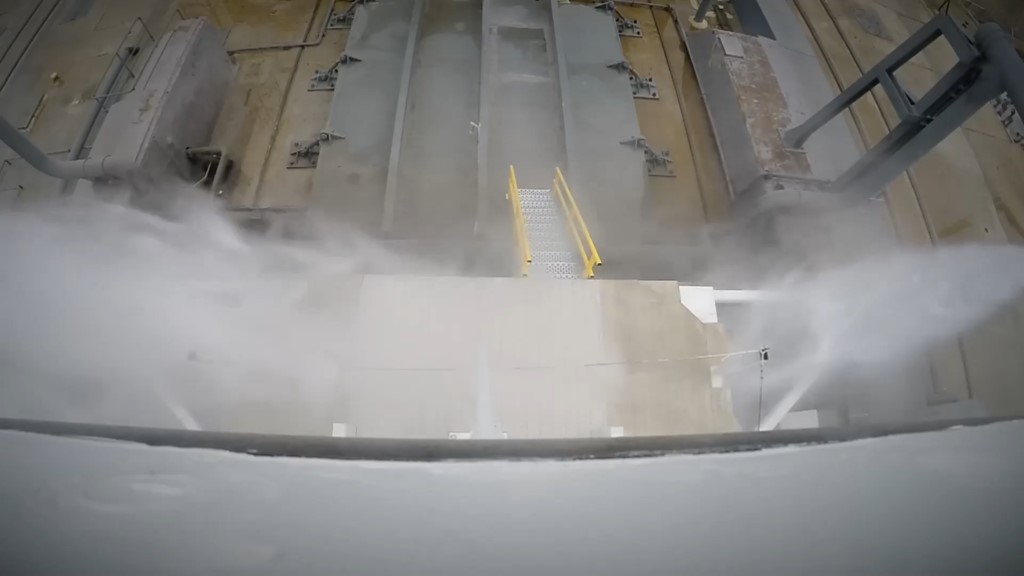
SpaceX nicely shared an on-board view of their pad abort test for crew dragon.
In this first view, crew dragon has detached the trunk section so the parachutes can deploy
It also gives us a beautiful view. At the center bottom is space launch complex 40 on cape Canaveral space force station where SpaceX launches Falcon 9, and on the right is space launch complex 41 used by ULA to launch Atlas V and - soon - Vulcan rockets. In the haze of the upper right you can see pads 39A and 39B at Kennedy space center, and the vehicle assembly building is towards the middle of the picture.
Back to parachutes. It's time for the drogues to deploy.
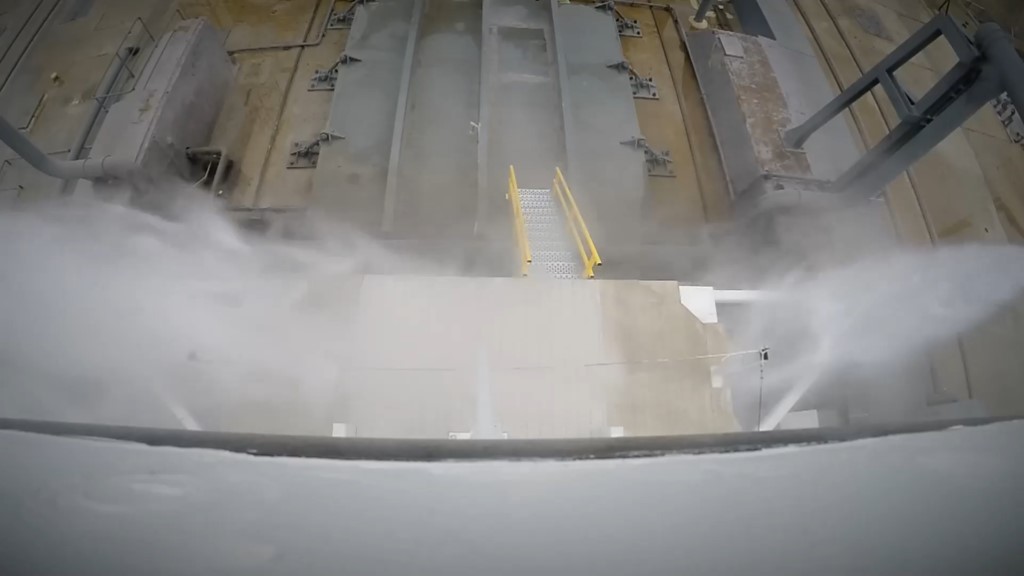
In this view, you can see the two lines that run from the drogue parachutes to the capsule. The three lines running to the side connect to the three main chute bags - this test was before the fourth main chute was added. They are slack, but when the drogue lines are disconnected from the capsule, they will go taut and pull out the main chute bags.
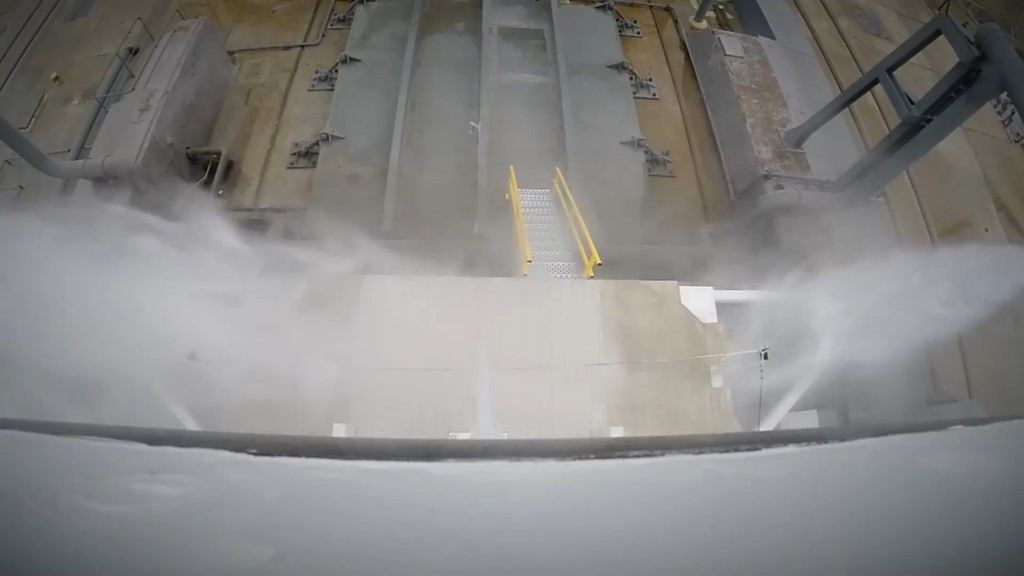
Here we see the main chute bags being pulled away from the capsule by the drogues
The mains will deploy from those bags. If you watch carefully, you can see that they are initially reefed.
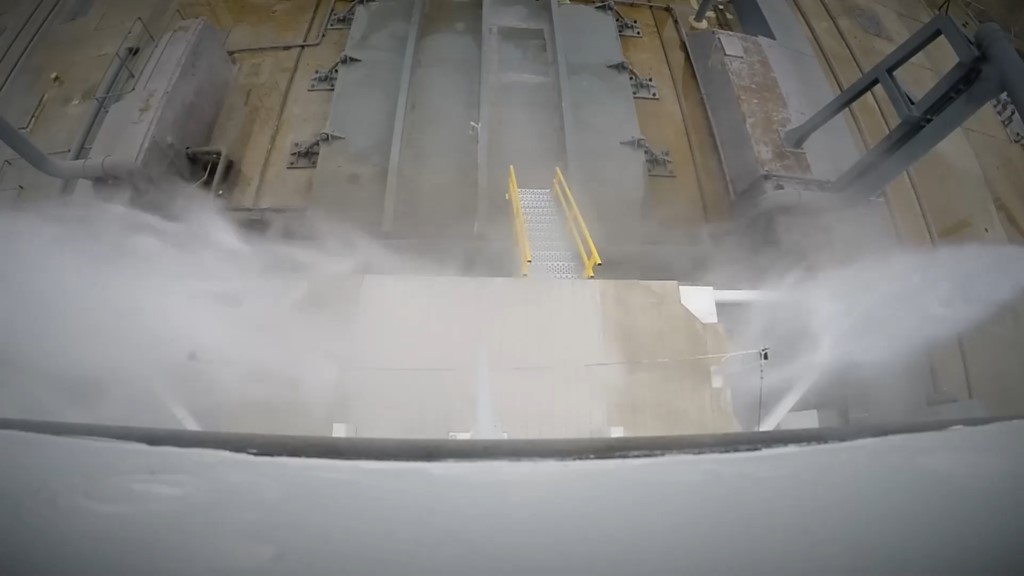
The mains have fully inflated, and our work is done.
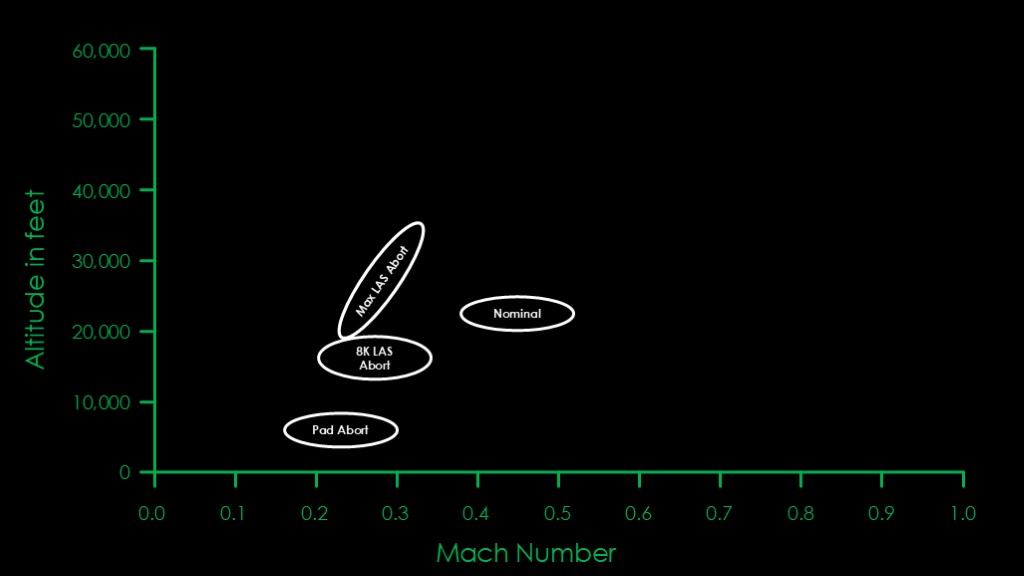
Orion testing defined 4 different areas of testing required, based on the different altitudes and speeds of the capsule.
There is the nominal capsule return from orbit, where the parachute deployment is at 25,000' at a speed of about 0.45 mach, or ...
There is the pad abort below 10,000' at a much slower speed, and then there are aborts during the launch the occur at higher altitudes and speed.
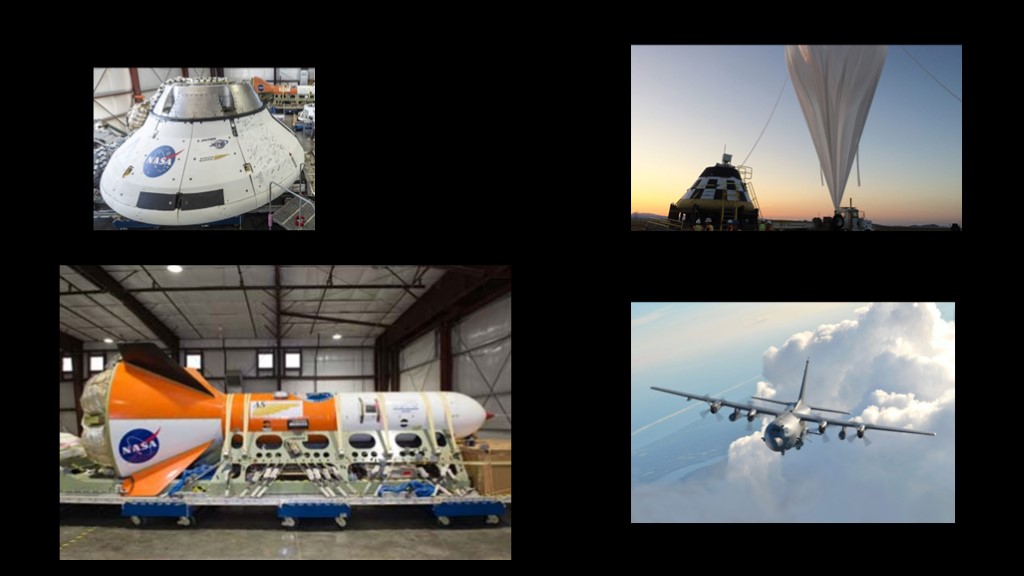
NASA built a capsule-shaped parachute test vehicle to perform the tests.
They used a C-130 aircraft to carry the test vehicle aloft for many tests, but the C-130 can't fly high enough for all tests, so they used a balloon that would carry the capsule to 45,000'.
Unfortunately, the capsule-shaped vehicle has too much drag to reach higher speeds, so NASA also build a dart-shaped test vehicle that could reach the required speeds.
Two test vehicles and two drop vehicles gives four different test approaches.

Going back to our chart, we can see that the capsule and plane can cover aborts from the pad and early in the flight.
Dropping the dart from the plane almost gives us coverage of the nominal case, but not full coverage...
The balloon and the capsule give coverage of the rest of the abort scenarios...
And the balloon and dart will fully cover the nominal case.
As you can see, the complexity of abort scenarios requires a lot of additional testing.
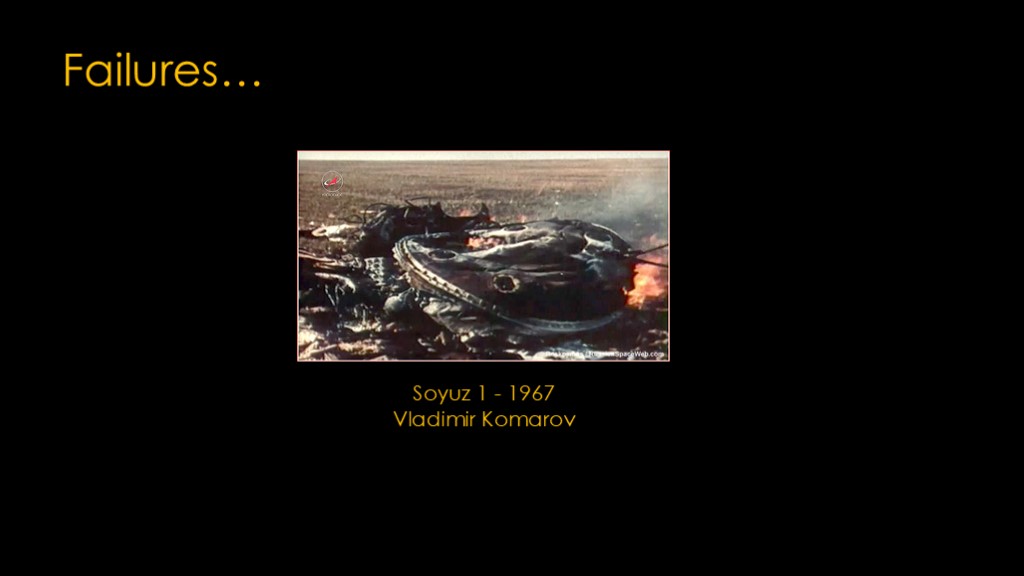
Parachute failures are rare but they do happen.
The only fatality was on the Soyuz 1 flight in 1967, when cosmonaut Vladimir Komarov was killed.
Apollo 15 lost on main chute during deployment but landed safely with the two remaining chutes.
During the Ares 1X flight test, there was a parachute failure during the recovery of the solid rocket first stage
(video)
The failure was traced to a design flaw that led to one chute being deployed in a disreefed configuration. That produced forces that were too strong for the parachute to handle, and it failed.
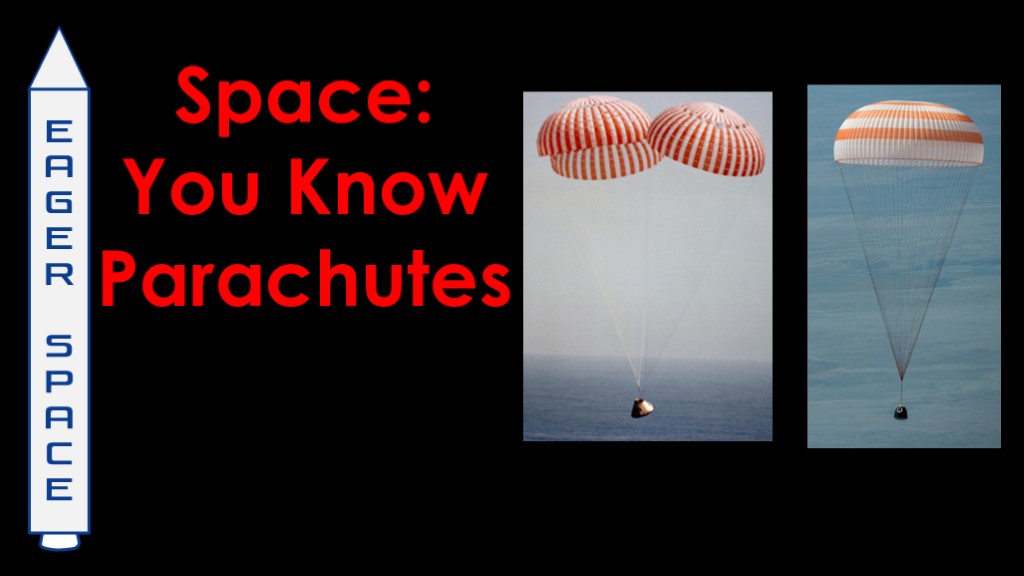
And that's why space parachutes are so cranky and require so much testing.
And now, you know parachutes.
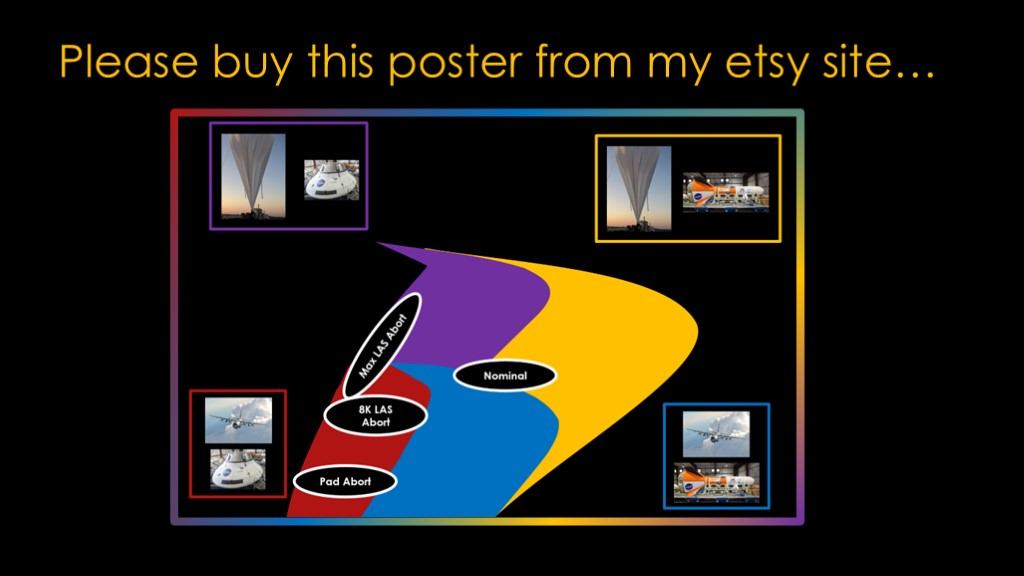
If you enjoyed this video, please buy my poster, "Capsule Parachute Testing: A Portrait in Four Colors"